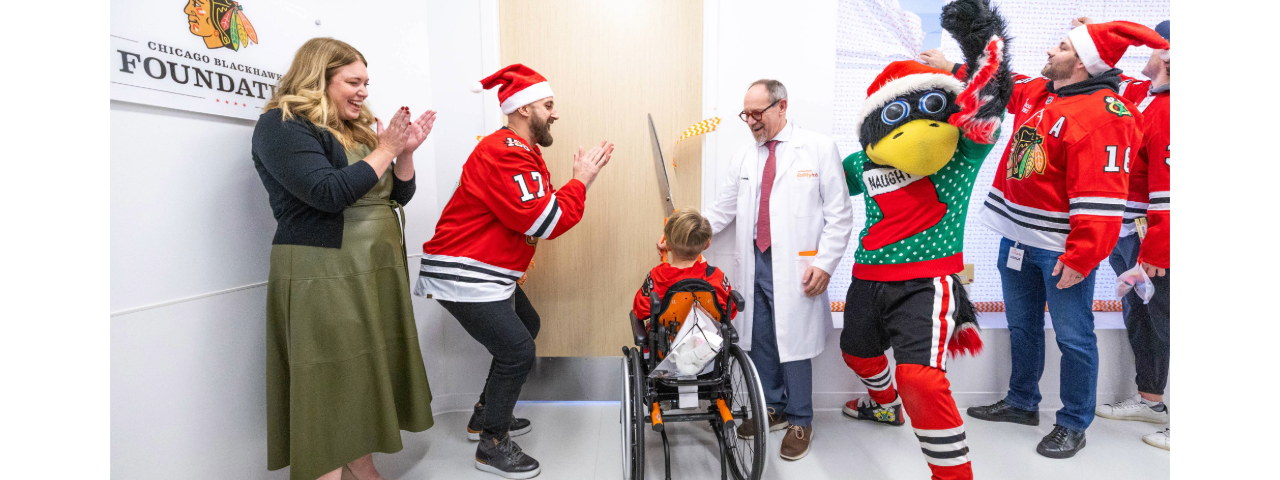Body
The prestigious journal Advanced Functional Materials recently highlighted a potential breakthrough from Shirley Ryan AbilityLab and Northwestern University researchers in the use of electrical stimulation in therapy for injured peripheral nerves.
Peripheral nerve injury can result from motor vehicle collisions, repetitive stress disorders, such as carpal tunnel syndrome, and even severe COVID-19 — and leave individuals with numbness, pain and limb paralysis. Because nerves heal very slowly, natural recovery can take months or even years. However, recent research shows that one hour of electrical stimulation applied to the repaired nerves immediately after surgery may accelerate the healing process by making nerves grow faster. Unfortunately, doctors lack evidence and technology to make this emerging treatment widely available.
In their research, co-lead author Dom D'Andrea, BS, research technician, Biologics Lab; and co-senior author Colin Franz, MD, PhD, attending physician and research scientist; show that an implantable, wireless and biodegradable device can deliver electrical therapy to improve the regrowth of damaged nerves. The device lasts just long enough to deliver the therapy, then begins to degrade hours later and is nearly vanished after 72 hours. Importantly, the researchers demonstrate that the wireless implant can deliver a treatment that is equally effective to traditional wire-based electrical stimulation, but without the risks (such as materials becoming dislodged in patient transport from the operating room, or wound infections from wires passing through the surgical wound).
Mentioned Profile

Colin Franz MD, PhD
Physician-Scientist Board Certifications: Neuromuscular Medicine, Electrodiagnostic Medicine, and PhysiatryMentioned Profile

Dom D'Andrea, BS
Laboratory TechnicianBody
By varying the chemical composition and thickness of the materials to make their devices, co-lead author Hexia Guo, BS, PhD, student; and co-senior author John Rogers, PhD, of Northwestern University; can specify how long before these devices degrade in the body. By precisely matching the therapeutic need to the device design, the devices can operate as long as therapeutically needed, but then degrade so no trace remains and no additional surgery is required to remove them.
Just last month, Dr. Franz was awarded the National Center for Medical Rehabilitation Research Early Career Research Award to conduct more research on electrical stimulation therapy with Dr. Rogers. In addition to working toward clinical trials on nerve stimulation therapy, the researchers will investigate the possibility of combining new drug therapies with wireless electrical stimulation therapy to achieve even greater improvements in nerve regeneration.

